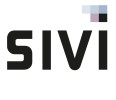HTTP-communicates over TCP/IP. An HTTP client connects to an HTTP server using TCP. After establishing a connection, the client can send an HTTP request message to the server:
POST /item HTTP/1.1
Host: 189.123.345.239
Content-Type: text/plain
Content-Length: 200The server then processes the request and sends an HTTP response back to the client. The response contains a statuscode that indicates the status of the request:
200 OK
Content-Type: text/plain
Content-Length: 200In the example above, the server returned a statuscode of 200. This is the standard success code for HTTP. If the server could not decode the request, it could have returned something like this:
400 Bad Request
Content-Length: 0| Status-Code | |
|---|---|
| 100 | Continue |
| 101 | Switching Protocols |
| 200 | OK |
| 201 | Created |
| 202 | Accepted |
| 203 | Non-Authoritative Information |
| 204 | No Content |
| 205 | Reset Content |
| 206 | Partial Content |
| 300 | Multiple Choices |
| 301 | Moved Permanently |
| 302 | Moved Temporarily |
| 303 | See Other |
| 304 | Not Modified |
| 305 | Use Proxy |
| 400 | Bad Request |
| 401 | Unauthorized |
| 402 | Payment Required |
| 403 | Forbidden |
| 404 | Not Found |
| 405 | Method Not Allowed |
| 406 | Not Acceptable |
| 407 | Proxy Authentication Required |
| 408 | Request Time-out |
| 409 | Conflict |
| 410 | Gone |
| 411 | Length Required |
| 412 | Precondition Failed |
| 413 | Request Entity Too Large |
| 414 | Request-URI Too Large |
| 415 | Unsupported Media Type |
| 500 | Internal Server Error |
| 501 | Not Implemented |
| 502 | Bad Gateway |
| 503 | Service Unavailable |
| 504 | Gateway Time-out |
| 505 | HTTP Version not supported |



Geef uw reactie op dit onderwerp.